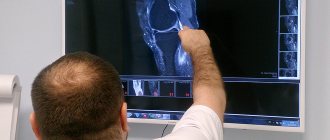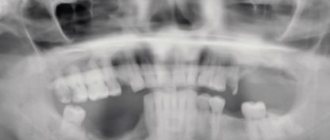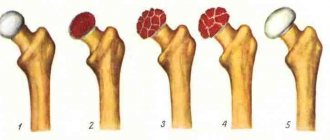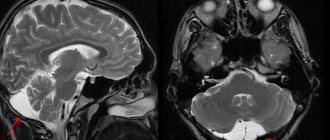The reasons for everything are trouble
The most common cause of finger swelling is injury.
In this case, along with swelling, symptoms such as pain, hematoma, bleeding, and difficulty moving can be observed. A bruise, cut, sprain, dislocation, fracture or burn can cause the phalanges of the fingers to hurt and swell. In addition, an insect bite can also be the “culprit” of swelling. It seems that for no particular reason the finger is swollen and hurts, but such symptoms can be associated with various forms of arthritis (infectious, post-traumatic, rheumatoid, metabolic and post-operative). It should also be noted that joints may be susceptible to osteoarthritis or degenerative tissue damage. Symptoms of the above diseases are accompanied by the appearance of swelling of the entire hand, an increase in temperature (at the affected area, less often the entire body), as well as redness of the skin areas. There are cases when in young men, psoriasis (chronic skin inflammation), as well as ankylosing spondylitis (characterized by damage to the joints in the sacroiliac joints and spine) occur together with rheumatoid arthritis. In this case, either both hands or only one of them can be affected by the pathological factor.
Symptoms of reactive arthritis, which appears after suffering from infectious diseases (genitourinary, intestinal, nasopharyngeal), may include swollen and red fingers on the upper and lower extremities. Arthrosis, in which the cartilage lining between the joints is destroyed and osteophytes (bone growths) appear, is accompanied by swelling and pain in the thumb, and in particular the bone on it. Oncological processes in tissues can also cause a tumor, these include:
- melanoma,
- basilioma,
- nevus.
Meanwhile, as clinical practice shows, it is rare to see new bone formations on the upper extremities.
Accompanying the tumor with symptoms of intoxication (head pain, vomiting, chills, nausea, high fever, thirst) may indicate the presence of erysipelas. The disease appears when the immune system decreases and group B streptococcus develops. Redness of the skin in the affected area is observed, heat is felt when touched and painful sensations appear.
With contact dermatitis, it swells in a specific place on the finger. This usually happens when the watch bracelet fits very close to the hand or the material of the accessory causes an allergic reaction. Swelling on the fingers can also be the result of a cold allergy, which is characterized by swelling, itching and rashes in the form of red spots.
Spasm in the blood vessels of the hands, which appears as a result of exposure to negative temperatures or an increased level of stress, is called Raynaud's syndrome. Reversible unpleasant sensations appear in the form of changes in skin color (at first it turns white, then turns blue and red), which are provoked by a decrease in blood circulation and its subsequent normalization. Because of this, swelling is observed, a burning sensation and pain are felt.
How to understand that you have arthrosis of the hand
The disease goes through several stages. To detect it as early as possible, you need to know the signs of each of them:
Stage 1 – there are periodic aching pains at night, you will feel tension in the muscles, and you may notice slight swelling. Fingers move without difficulty.
Stage 2 – the pain bothers you both at night and during the day, especially after putting pressure on your fingers. When moving, a crunching sound appears. The muscles of the affected fingers begin to atrophy and increase in volume. Bone growths are formed - Heberden's nodes.
Stage 3 – the affected fingers are already severely limited in mobility. The surface layer of the interphalangeal joints is completely destroyed, osteophytes merge into a single whole, pain is constantly present.
Arthrosis and arthritis of the hands have many common symptoms, but they are completely different diseases. What are their differences? Comment from the famous doctor, Professor Bubnovsky:
...and the treatment is the essence
When the reasons why the fingers are swollen and painful have been established, the patient is prescribed symptomatic and pathogenetic (the purpose of which is to eliminate the cause itself) drugs, which include analgesics, NSAIDs, antihistamines, antibiotics, diuretics, and chondroprotectors. Medicines containing synthetic hormones are prescribed to people with hormonal imbalance.
When the fingers are swollen and the joints hurt, treatment may include complex therapy with physiotherapy (ultrahigh frequency, centimeter, ultraviolet therapy, electrophoresis).
Soft skin fibroma
Soft fibroma is similar in appearance to papilloma and grows to a large size. Soft fibroma is most often located on a stalk and can be easily removed with a laser. Unlike hard fibroids, soft fibroids contain fatty tissue. It is less dense, has brown hyperpigmentation, or its color does not differ from the color of the skin.
Surgical methods - in case of emergency
Surgery will be necessary if there is an open fracture, ligament damage or severe injury. Panaritium can also serve as an indication for surgical intervention. To cope with this disease, it is imperative to eliminate the inflamed area with pus, thoroughly clean the cavity with the infection and apply stitches. After surgery, it is necessary to do dressings, take antibiotics and anti-inflammatory drugs.
Surgery may be required if the cartilage and surfaces of the joints are severely damaged in the later stages of arthritis or arthrosis, and the fingers become swollen, stiff, and painful. In especially severe cases, endoprosthetics is prescribed, when a worn-out joint is replaced with an artificial one.
Surgery may be performed in the presence of a malignant tumor. The oncologist prepares an individual therapy program for each patient.
Diagnostics
Orthopedic traumatologists are often involved in determining the cause of hand swelling. If indicated, patients are referred to surgeons, rheumatologists, vascular surgeons, and other specialists. The diagnosis is made based on the results of the following procedures:
- Questioning, physical examination
. The specialist determines the circumstances and time of swelling, identifies other symptoms, and monitors the dynamics of the disease. Evaluates the localization, prevalence, severity of edema, range of motion in joints, color, density, tissue temperature. - Radiography
. Prescribed for injuries, joint diseases, and some purulent processes. Allows you to confirm the presence of fragments or displacement of the articular ends of the bone, inflammatory and degenerative changes. - Ultrasonography.
It is carried out to confirm thrombosis, determine the condition of venous and lymphatic vessels, and assess the prevalence of purulent processes. - Other imaging techniques
. In doubtful cases, MRI is performed for a detailed study of soft tissues, and for the study of hard structures. - Laboratory research
. Tests help detect signs of inflammation, markers of rheumatic diseases, and renal dysfunction.
Pressotherapy of hands
Folk remedies
Folk remedies will help as the main treatment. We will describe the most effective recipes for treating swollen fingers:
- Decoction of pine buds : 1–2 tsp. kidneys, pour 300 ml of boiling water, keep in a water bath for 10 minutes, when it cools down, drink during the day. Take throughout the week.
- Fresh pumpkin juice: drink 200 ml of freshly prepared juice every day for at least a month. The recipe is healing, swelling does not return after such treatment.
- We make baths: with essential oil, calendula oil, eucalyptus oil. Add 10 drops of essential oils to well-warm water (1–2 liters) and immerse your hands for 15–20 minutes. Do this every evening until complete healing.
- Fresh cucumbers also help a lot; we make juice and drink it when we’re thirsty. You need to drink at least 500 ml per day. Or just eat fresh, preferably homemade, cucumbers and plenty of them.
- We take table 3. l. anise seeds , pour 300 ml of boiling water and cook for 5 minutes. When it cools down, take 1-2 tbsp. l. 3 times a day, about 2-3 weeks.
Risk factors for soft tissue sarcomas
Currently, some factors have been identified that increase the risk of developing soft tissue sarcomas.
Ionizing radiation is responsible for the occurrence of 5% of soft tissue sarcomas as a result of previous radiation for other tumors (eg, breast cancer or lymphoma). The average period between exposure to radiation and detection of soft tissue sarcoma is 10 years.
Diseases in the family. It has been found that some hereditary diseases increase the risk of developing soft tissue sarcomas. These include:
- Neurofibromatosis , which is characterized by the presence of multiple neurofibromas (benign tumors) under the skin. In 5% of patients with neurofibromatosis, neurofibroma degenerates into a malignant tumor.
- Gardner's syndrome leads to the formation of benign polyps and cancer in the intestines. In addition, this syndrome causes the formation of desmoid tumors (low-grade fibrosarcomas) in the abdomen and benign bone tumors.
- Li-Fraumeni syndrome increases the risk of developing breast cancer, brain tumors, leukemia, and adrenal cancer. In addition, patients with this syndrome have an increased risk of soft tissue and bone sarcomas.
- Retinoblastoma (a malignant tumor of the eye) can be hereditary. Children with this form of retinoblastoma have an increased risk of developing bone and soft tissue sarcomas.
The only way to prevent the development of soft tissue sarcomas is to (if possible) eliminate known risk factors.
Prevention and nutrition
Preventive measures include primarily:
- Banal adherence to a healthy lifestyle, playing sports, swimming, eating right.
- Remove bad habits: alcoholic drinks, smoking.
- Drink at least 2 liters of clean water during the day, and stop drinking liquids at least 3 hours before bedtime.
- Once a year, undergo a full medical examination, for yourself, and not as a diversion.
The diet should be healthy and include the following foods: seasonal vegetables, fruits, juices, fish, herbs, various cereals, potatoes baked in their skins, watermelons, legumes, dairy products, steamed veal are healthy.
Tumor of fingers during pregnancy
Swollen fingers of a pregnant woman do not always indicate the presence of some kind of pathology. Most often, the cause may be physiological changes in the body. They help carry the fetus, but contribute to fluid retention in the body. Its total volume increases, and the amount of albumin in the blood decreases.
Swollen fingers of a pregnant woman may also indicate excessive consumption of table salt. And it is known to retain water in the body.
Swollen fingers occur when:
- Gestosis - characterized by: swollen fingers, the appearance of cramps, increased blood pressure.
- Kidney disease.
- Crohn's disease.
- Heart diseases.
- Allergies.









